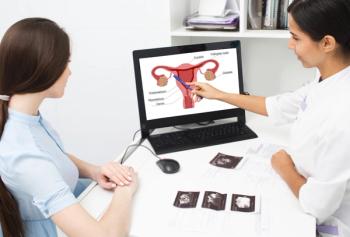
In the third installment of RSV Roundtable, our panel discusses the impact nirsevimab has had this RSV season.

In the third installment of RSV Roundtable, our panel discusses the impact nirsevimab has had this RSV season.

Review some of the top stories from the Contemporary OB/GYN website over the last week, and catch up on anything you may have missed.

A comprehensive study reveals variations in monitoring low-risk cesarean delivery rates across 5 metrics, emphasizing the significance of timely and accurate assessment from birth certificate data.

Bhavik Kumar, MD, MPH, family medicine doctor in Houston, Texas, discusses how clinicians in Texas and other states where abortion is restricted can help their patients find their necessary care in light of the Kate Cox abortion case in Texas.

Daré Bioscience's DARE-PDM1 showcases promising safety, efficacy, and pharmacokinetic results in phase 1 trials, highlighting its potential to revolutionize primary dysmenorrhea treatment.

Explore the heightened demand for blood transfusions among stillbirth cases linked to suspected placental abruption, shedding light on clinical outcomes and hematologic indices.

A recent study reported the link between antenatal corticosteroid timing and the 5 and a half-year survival and neurological outcomes in preterm children, highlighting the importance of evaluating and optimizing the interval between administration and birth for improved long-term results.

Discover insights from a recent study investigating the potential link between maternal mood disorders and schizophrenia with the risk of type 1 diabetes in children, shedding light on factors impacting early childhood health.

Intrapartum antibiotic prophylaxis for Group B Streptococcus (GBS) during labor induction not only reduces clinical chorioamnionitis but also decreases peripartum infectious morbidity, suggesting potential broader applications for tailored prophylaxis beyond GBS-positive cases.

A recent study reveals that hysterectomy without an adnexal surgical procedure increases the risk of osteoporosis among women aged 40 to 59 years, emphasizing the need for informed patient consultation regarding this potential association.

New study suggests maternal migration background impacts survival rates for infants born extremely preterm, underscoring the need to address disparities in birth outcomes and investigate potential connections between immigration status and perinatal health.

A recent study unveiled a novel screening method, utilizing validated questionnaires to accurately identify myofascial urinary frequency syndrome in patients with lower urinary tract symptoms.

Recent CDC data reveals a substantial decrease in cigarette smoking during pregnancy from 2016 to 2022 across all race and ethnic groups, emphasizing positive strides in maternal and fetal health.

In the second installment of RSV Roundtable, our panel explains how they are educating patients and parents when it comes to RSV, vaccines and preventive measures, and limited treatment availability.

Agile Therapeutics has provided insights on strengthening the Affordable Care Act's contraceptive coverage, with a recent House Committee report revealing barriers, inequalities, and recommended changes.

Review some of the top stories from the Contemporary OB/GYN website over the last week, and catch up on anything you may have missed.

A new study study showcased the accuracy of an algorithm in identifying pregnant patients with inherited bleeding disorders, unlocking new possibilities for precision healthcare.

A recent study reveals that relugolix combination therapy demonstrates sustained reduction in menstrual bleeding volume for women with symptomatic uterine fibroids.

A recent study reveals heightened rates of concomitant bilateral salpingo-oophorectomy during benign hysterectomy in women with disabilities, shedding light on potential disparities and urging improved physician counseling and shared decision-making strategies.

Discover how active surveillance, a growing approach in managing cervical intraepithelial neoplasia, offers a nuanced alternative to immediate interventions, showcasing promising regression rates and reduced risk of overtreatment.

The Supreme Court's upcoming decision on mifepristone, a key abortion medication, may alter access, introducing potential restrictions and impacting the landscape of abortion rights.

Jay Goldberg, MD, ob-gyn at Einstein Medical Center of Philadelphia, outlines treatment options for uterine fibroids in patients with different needs.

Toby Maurer, MD, professor at University of California, San Francisco, discusses dermatologic conditions commonly seen in pediatric patients.

Toby Maurer, MD, professor at University of California, San Francisco, discusses the clinical pearls of inflammatory vulvovaginal conditions and treatment.

Toby Maurer, MD, professor at University of California, San Francisco, discusses common skin conditions seen in female patients, along with the best methods of treating these conditions.

A recent study looks at the impact COVID-19 had on human papillomavirus vaccination rates in New York City and Long Island.

Jay Goldberg, MD, ob-gyn at Einstein Medical Center of Philadelphia, discusses treatment paradigms which can help clinicians manage abnormal uterine bleeding in their patients.

A recent study highlights significant disparities in kidney transplant and nephrology care access for pregnant patients with end-stage kidney disease, revealing reduced survival rates and limited access to crucial care compared to non-pregnancy-related causes.

Last year’s historic RSV season left many wondering if this was going to become a recurring trend. Physicians weigh in on what they are seeing at their institutions in terms of infection rates.

Review some of the top stories from the Contemporary OB/GYN website over the last week, and catch up on anything you may have missed.